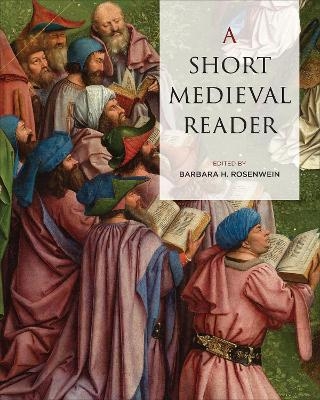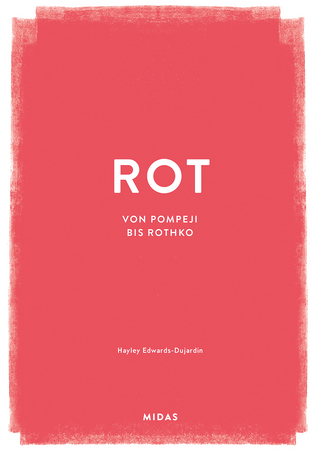
A Short Medieval Reader
University of Toronto Press (Verlag)
978-1-4875-6341-7 (ISBN)
A Short Medieval Reader contains the essential primary sources for exploring the Middle Ages in depth. Designed to both complement the sixth edition of A Short History of the Middle Ages and be used on its own, this book provides comprehensive readings ranging from Iceland to Egypt and from England to Iraq.
Each source is clearly dated, and its original language is specified to remind students of the extraordinary diversity that existed in the Middle Ages. Introductions to each source supply the necessary context and are followed by questions to guide the reader. Annotations and explanations are provided. A Short Medieval Reader offers a feast for inquiring minds, priced for a student’s budget.
Barbara H. Rosenwein is a professor emerita in history at Loyola University Chicago.
Contents
Acknowledgments
Preface
Abbreviations and Symbols
Reading Primary Sources: A Short Introduction
I. Prelude: The Roman World Transformed (c.300–c.600)
1.1 Toleration or Favoritism? The Edict of Milan (313)
1.2 Law: The Theodosian Code (438)
1.3 The Eremitical Model: Athanasius, The Life of Saint Antony of Egypt (357)
1.4 Conversion: Augustine, Confessions (397–401)
1.5 Relating This World to the Next: Augustine, The City of God (413–426)
1.6 The Christian View of Plague: Gregory the Great, Letter to Bishop Dominic of Carthage (600)
1.7 Monasticism: The Benedictine Rule (c.530–c.560)
1.8 Merovingian Gaul’s Bishop-Historians: Gregory of Tours, Histories (576–594)
II. The Emergence of Sibling Cultures (c.600–c.750)
2.1 The Iconoclastic Argument: The Synod of 754
2.2 The Sacred Text: Qur’an Suras 1, 53:1–18, 81, 87, 96, 98 (c.610–622)
2.3 Muslim Conquests: John of Nikiu, Chronicle (c.690)
2.4 Umayyad Diplomacy: The Treaty of Tudmir (713)
2.5 A Model Christian Queen: The Life of Queen Balthild (c.680)
2.6 Creating a Roman Christian Identity for England: Bede, The Ecclesiastical History of the English People (731)
III. Creating New Identities (c.750–c.900)
3.1 An Abbasid Victory in Verse: Abu Tammam, The Sword Gives Truer Tidings (838)
3.2 An Early View of the Prophet: Muhammad ibn Ishaq, Life of Muhammad (754–767)
3.3 Hadith Literature: Al-Bukhari, On Fasting (9th cent.)
3.4 The Pope and the Carolingians: Pope Stephen II, Letters to King Pippin III (755–756)
3.5 Charlemagne as Roman Emperor: Einhard, Life of Charlemagne (825–826?)
3.6 Modeling the State on Old Testament Israel: The Admonitio Generalis (789)
3.7 Manors in the West: Polyptyque of the Church of Saint Mary of Marseille (814–815)
IV. Political Communities Reordered (c.900–c.1050)
4.1 Fragmentation in the Islamic World: Al-Tabari, The Defeat of the Zanj Revolt (c.915)
4.2 Evanescent Centralization in al-Andalus: Ibn ‘Abd Rabbihi, Praise Be to Him (929–940)
4.3 Donating to Cluny: Cluny’s Foundation Charter (910) and various charters of donation (10th–11th cent.)
4.4 Defining Sexual Sins: Burchard of Worms, Decretum (c.1020)
4.5 Love and Complaints in Angoulême: Agreement between Count William of the Aquitainians and Hugh IV of Lusignan (1028)
4.6 The Peace of God at Bourges: Andrew of Fleury, The Miracles of St. Benedict (1040–1043)
4.7 Rebellion at Cologne: Annals of Lampert of Hersfeld (1077–1079)
4.8 The Powerful in the Byzantine Countryside: Romanus I Lecapenus, Novel (934)
4.9 Imperial Rule under Two Sisters: Michael Psellus, Zoe and Theodora (before 1063)
4.10 Poland’s Self-Image: Boleslaw’s Coin (992–1000)
4.11 The Vikings as They Saw Themselves: Egil’s Saga (10th cent. /13th cent.)
4.12 The Vikings as the English Saw Them: The Anglo-Saxon Chronicle (c.1048?)
V. New Configurations (c.1050–c.1150)
5.1 Launching the Investiture Conflict: Pope Gregory VII (1073–1085), Admonition to Henry IV (1075)
5.2 The Royal Response: Henry IV, Letter to Gregory VII (1075)
5.3 The Bayeux Tapestry (end of the 11th cent.)
5.4 Calling the Crusade: Robert the Monk, Pope Urban II Preaches the First Crusade (1095)
5.5 Jewish Martyrs: Solomon bar Samson, Chronicle (c.1140)
5.6 The Muslim View of the First Crusade: Ibn al-Qalanisi, The Damascus Chronicle of the Crusades (before 1160)
5.7 Logic: Peter Abelard, Sic et Non (?1122–1126)
5.8 On Marriage: Peter Lombard, Sentences (1148–1151)
VI. Ambitions Realized and Thwarted (c.1150–c.1250)
6.1 A Troubadour Love Song: Bernart de Ventadorn, When I See the Lark (c.1147–after 1172)
6.2 Disciplining and Purifying Christendom: Decrees of Lateran IV (1215)
6.3 Mocking the Papal Bureaucracy: The Gospel According to the Marks of Silver (c.1200)
6.4 Devotion through Poverty: Peter Waldo in The Chronicle of Laon (1173–1178)
6.5 Devotion through Mysticism: Jacques de Vitry, The Life of Mary of Oignies (1213)
6.6 The Mendicant Movement: Saint Francis, A Rule for Hermitages (1217–1221) and The Testament (1226)
6.7 Saladin’s Jihad: Ibn Shaddad, The Life Saladin (1195–1216)
6.8 The Fourth Crusade: Niketas Choniates, O City of Byzantium (c.1215)
6.9 English Common Law: The Assize of Clarendon (1166)
6.10 King and Nobles: Magna Carta (1215)
VII. Empires of Land and Mind (c.1250–c.1350)
7.1 The Hungarian King Bewails the Mongol Invasions: Béla IV, Letter to Pope Innocent IV (c.1250)
7.2 The Spanish Cortes: Alfonso X, Cortes of Valladolid (1258)
7.3 The Hanseatic League: Decrees of the League (1260–1264)
7.4 Jews in England: Henry III, Order to the Chief Officers of the Jewish Exchequer (1253), Edward I, Statute of the Jewry (1275)
7.5 A Charismatic Ruler: Joinville, The Life of Saint Louis (1298–1309)
7.6 The Papal Challenge: Boniface VIII, Unam sanctam (1302)
7.7 Scholasticism: Thomas Aquinas, On Love (1271)
7.8 The Vernacular Comes into Its Own: Dante, Inferno, Canto V (Paolo and Francesca) (1313–1321)
7.9 Inquisition: Jacques Fournier, Episcopal Register (1318–1325)
7.10 Gender and Its Discontents: Court Record of Rolandina Roncaglia (1354)
VIII. Catastrophe and Creativity (c.1350–c.1500)
8.1 A Turkish Hero: Ashikpashazade, Othman Comes to Power (late 15th cent.)
8.2 The Effects of the Plague: Giovanni Boccaccio, Decameron (1348–1351)
8.3 Warding Off the Plague through Processions: Ibn Battuta, Travels (before 1368)
8.4 The Woolworkers (Ciompi) Revolt at Siena: Donato di Neri and His Son, Chronicle of Siena (1371)
8.5 Chivalric and Non-chivalric Models: Froissart, Chronicles (c.1400)
8.6 Aftermath of the Peasant Revolt in England: The Case of Richard de Leycester (1381)
8.7 National Feeling: Jeanne d’Arc, Letter to the English (1429)
| Erscheinungsdatum | 20.01.2023 |
|---|---|
| Zusatzinfo | 2 b&w illustrations, 2 b&w maps, 1 b&w figure |
| Verlagsort | Toronto |
| Sprache | englisch |
| Maße | 203 x 254 mm |
| Gewicht | 520 g |
| Themenwelt | Kunst / Musik / Theater ► Kunstgeschichte / Kunststile |
| ISBN-10 | 1-4875-6341-8 / 1487563418 |
| ISBN-13 | 978-1-4875-6341-7 / 9781487563417 |
| Zustand | Neuware |
| Informationen gemäß Produktsicherheitsverordnung (GPSR) | |
| Haben Sie eine Frage zum Produkt? |
aus dem Bereich


